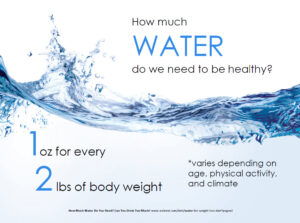Maintaining a healthy lifestyle is crucial for overall wellness and fitness. In the United States, where fast food and sedentary lifestyles are common, it’s essential to adopt habits that promote a balanced life.

By focusing on nutrition, regular exercise, mental wellness, adequate sleep, and preventive care, Americans can significantly improve their quality of life. Simple changes, such as incorporating more fruits and vegetables into your diet or taking a short walk each day, can make a substantial difference.
Embracing these habits not only enhances physical fitness but also contributes to a happier, more balanced life.
Key Takeaways
- Focus on nutrition to maintain a healthy lifestyle.
- Incorporate regular exercise for overall fitness.
- Prioritize mental wellness through stress management.
- Ensure adequate sleep for physical recovery.
- Engage in preventive care to avoid health issues.
The State of Health in America Today
Understanding the state of health in America today requires examining both the statistics on prevalent health issues and the broader societal factors at play. The health landscape of the United States is complex, with various factors influencing the overall well-being of its citizens.
Current Health Statistics in the USA
The United States faces significant health challenges, as reflected in current health statistics. For instance, obesity rates have been on the rise, affecting a substantial portion of the population. According to recent data, more than a third of adults in the U.S. are obese, which is linked to various other health issues, including diabetes and heart disease.
Common Health Challenges Americans Face
Americans face a myriad of health challenges, from chronic diseases to mental health issues. Access to healthcare remains a significant concern, with many individuals lacking adequate health insurance. Lifestyle factors, such as diet and physical activity levels, also play a crucial role in determining overall health.
Some of the key health challenges include:
- Managing chronic conditions like diabetes and hypertension
- Addressing mental health concerns, such as depression and anxiety
- Combating the obesity epidemic through dietary changes and increased physical activity
By understanding these challenges and the current health statistics, we can better navigate the complexities of American health and work towards improving the overall well-being of the population.
Understanding What Makes a Healthy Body
Understanding the elements that constitute a healthy body is crucial for maintaining overall health. A healthy body is not just about physical appearance; it’s about achieving a balance between various components that contribute to overall wellness.
Key Components of Physical Wellness
Physical wellness is a critical aspect of a healthy body. It involves several key components, including:
- Nutrition: Consuming a balanced diet that provides the body with the necessary nutrients.
- Exercise: Engaging in regular physical activity to maintain cardiovascular health and muscle strength.
- Sleep: Getting adequate rest to allow the body to recover and rejuvenate.
These components are interconnected and play a vital role in maintaining physical health.
The Interconnection Between Physical and Mental Health
There’s a significant interconnection between physical and mental health. Research has shown that physical activity can have a positive impact on mental well-being, reducing stress and anxiety. Conversely, mental health can influence physical health, with conditions like depression affecting appetite and sleep patterns.
Maintaining a healthy body requires a holistic approach that considers both physical and mental health. By understanding and addressing these interconnected aspects, individuals can work towards achieving overall wellness.
Tip 1: Balanced Nutrition for Americans
The foundation of a healthy lifestyle in America starts with understanding and implementing balanced nutrition. With the diverse food landscape in the United States, making informed dietary choices can be challenging yet crucial for overall health.
Navigating the American Food Landscape
The American food environment is characterized by a wide variety of choices, from fresh produce to processed foods. Navigating this landscape requires an understanding of what constitutes healthy eating. It’s about focusing on whole foods, such as vegetables, fruits, whole grains, lean proteins, and healthy fats.
Practical Ways to Improve Your Eating Habits
Improving eating habits can be achieved through simple, practical steps. One effective strategy is meal planning, which helps in organizing healthy meals even on a busy schedule.
Meal Planning on a Busy Schedule
To plan meals effectively, start by setting aside time each week to plan and prepare meals for the next few days. This can include making a grocery list, shopping for fresh ingredients, and prepping meals in advance. Batch cooking is another efficient method, allowing for the preparation of multiple meals at once.
Reading Food Labels Effectively
Another crucial aspect of healthy eating is reading food labels effectively. This involves understanding nutritional information, such as serving sizes, calorie counts, and the presence of added sugars, sodium, and unhealthy fats. Being informed helps in making healthier choices.
By implementing these strategies, Americans can take a significant step towards achieving balanced nutrition and enhancing their overall health and well-being.
Tip 2: Exercise Routines for a Healthy Body
Engaging in regular physical activity is a key component of a healthy lifestyle in America. Exercise not only improves physical health but also has a positive impact on mental well-being. To achieve overall wellness, it’s essential to incorporate effective exercise routines into your daily life.
Exercise Recommendations for Different Age Groups
Exercise needs vary across different age groups. For children and adolescents, a minimum of 60 minutes of moderate to vigorous physical activity daily is recommended. Adults should aim for at least 150 minutes of moderate-intensity or 75 minutes of vigorous-intensity exercise per week. For older adults, exercises that improve balance and prevent falls are particularly important.
Finding Activities That Work for You
The key to maintaining a consistent exercise routine is finding activities that you enjoy. Whether it’s walking, jogging, cycling, or group fitness classes, the options are vast. Experimenting with different types of exercises can help you identify what works best for your lifestyle and preferences.
Affordable Fitness Options in America
Staying physically active doesn’t have to be expensive. Many communities offer free or low-cost fitness programs, such as public swimming pools, walking trails, and community centers. Online resources and fitness apps also provide affordable alternatives to traditional gym memberships.
Incorporating Movement Throughout Your Day
In addition to dedicated exercise sessions, incorporating movement throughout your day can significantly boost your physical activity levels. Simple changes, such as taking the stairs instead of the elevator, walking to a coworker’s desk instead of sending an email, or doing a few stretching exercises during commercial breaks, can make a big difference.
By adopting a combination of regular exercise routines and increased daily movement, Americans can take significant steps towards achieving a healthier body and improving overall well-being.
Tip 3: Prioritizing Mental Wellness
As we navigate the challenges of contemporary living, prioritizing mental wellness is more important than ever. Mental wellness is not just the absence of mental health issues but a state of well-being that enables us to cope with the stresses of life, work productively, and contribute to our communities.
The Mind-Body Connection
The connection between the mind and body is intricate. Mental wellness significantly influences our physical health, and vice versa. For instance, chronic stress can lead to a variety of physical health problems, including cardiovascular disease and a weakened immune system.
Stress Management in a Fast-Paced Society
Effective stress management is crucial in today’s fast-paced society. Techniques such as mindfulness meditation and deep breathing exercises can help mitigate the negative impacts of stress on both mental and physical health.
Meditation and Mindfulness Practices
Meditation and mindfulness practices have been shown to reduce stress and anxiety, improve concentration, and enhance overall well-being. Regular practice can lead to a more balanced and healthy life.
Mental Health Resources in the USA
The USA offers a variety of mental health resources, including hotlines, support groups, and professional therapy services. Utilizing these resources can provide individuals with the support they need to maintain good mental health.
By prioritizing mental wellness and employing effective stress management techniques, individuals can improve their quality of life and build resilience against the challenges of modern living.
Tip 4: Sleep Optimization for Americans
Americans are facing a sleep deprivation epidemic, making sleep optimization a pressing concern. The consequences of poor sleep are far-reaching, affecting not just physical health but also mental well-being and productivity.
Sleep Deprivation Epidemic in the USA
Sleep deprivation is a widespread issue in the United States, with statistics showing that a significant portion of the population doesn’t get enough sleep. The Centers for Disease Control and Prevention (CDC) have even classified sleep deprivation as a public health epidemic. The reasons for this are multifaceted, ranging from lifestyle factors to environmental influences.
Creating a Healthy Sleep Environment
Creating a conducive sleep environment is crucial for improving sleep quality. This involves making the bedroom a sanctuary for sleep by ensuring it is dark, quiet, and at a comfortable temperature. Investing in blackout curtains, earplugs, or a white noise machine can be beneficial.
Managing Screen Time Before Bed
One of the significant barriers to good sleep is screen time before bed. The blue light emitted by smartphones, tablets, and computers can suppress melatonin production, making it harder to fall asleep. Establishing a pre-bedtime routine that avoids screens for at least an hour can significantly improve sleep quality.
Developing a Consistent Sleep Schedule
Maintaining a consistent sleep schedule is vital for regulating the body’s internal clock. This means going to bed and waking up at the same time every day, even on weekends.
“A consistent sleep schedule is key to improving the quality of your sleep,” says Dr. Nathaniel Watson, a sleep specialist.
By doing so, individuals can enhance their sleep optimization efforts.

By addressing sleep deprivation and focusing on creating a healthy sleep environment, Americans can take significant steps towards improving their overall health and well-being.
Tip 5: Preventive Healthcare in the American System
Preventive healthcare measures are essential for Americans to avoid chronic diseases and maintain well-being. By understanding and utilizing preventive healthcare services, individuals can significantly improve their health outcomes.
Navigating Health Insurance for Preventive Care
The Affordable Care Act (ACA) mandates that most health insurance plans cover certain preventive services without copays or coinsurance. This includes vaccinations, screenings, and counseling for various health conditions. To navigate health insurance for preventive care, individuals should:
- Review their insurance plan’s coverage details
- Understand what preventive services are covered
- Schedule regular check-ups and screenings
Essential Screenings by Age and Risk Factors
Different age groups and risk factors determine the necessary health screenings. For instance, adults over 50 should undergo regular colon cancer screenings, while those with a family history of heart disease may need more frequent cholesterol checks.
| Age Group | Recommended Screenings |
|---|---|
| 20-39 | Blood pressure check, cholesterol screening, diabetes screening |
| 40-64 | Colon cancer screening, mammogram (for women), prostate screening (for men) |
| 65+ | Osteoporosis screening, vision and hearing tests |
Finding the Right Healthcare Providers
Choosing the right healthcare provider is crucial for receiving quality preventive care. Individuals should consider factors such as the provider’s specialty, patient reviews, and insurance coverage.
Advocating for Your Health Needs
Patients should feel empowered to advocate for their health needs. This includes asking questions about recommended screenings, understanding test results, and discussing concerns with their healthcare provider.
Hydration Strategies for Americans
As the importance of hydration becomes more widely recognized, Americans are seeking out new ways to stay properly hydrated throughout the day. Adequate hydration is crucial for maintaining energy levels, supporting physical performance, and ensuring overall health.
Water Quality Across the United States
The quality of tap water varies significantly across different regions in the United States. While the Environmental Protection Agency (EPA) sets national standards for drinking water, local water treatment processes can affect the taste, odor, and purity of tap water. For instance, some areas may have higher levels of certain minerals or contaminants.
| Region | Common Contaminants | Recommended Action |
|---|---|---|
| Northeast | Lead, Chlorine | Use a water filter |
| Southwest | Arsenic, Fluoride | Consider bottled or filtered water |
| Midwest | Nitrates, Bacteria | Regularly test well water |
Creative Ways to Increase Daily Water Intake
Increasing daily water intake can be achieved through simple changes in daily habits. Drinking a glass of water as soon as you wake up can kickstart your hydration. Additionally, carrying a reusable water bottle can serve as a constant reminder to drink more throughout the day.
Hydration Apps and Tools
There are numerous apps and tools designed to help track and manage hydration. Waterlogged and Hydro Coach are popular apps that allow users to set hydration goals and track their progress. These tools can be particularly useful for individuals who struggle to drink enough water throughout the day.
By understanding the importance of hydration, being aware of local water quality, and utilizing tools to track intake, Americans can adopt effective hydration strategies. Implementing these practices can lead to improved overall health and well-being.
Managing Weight in America’s Obesogenic Environment
The modern American lifestyle, characterized by high-calorie diets and sedentary behaviors, complicates weight management efforts. The term “obesogenic environment” refers to the various factors in our surroundings that promote obesity, including the widespread availability of high-calorie foods and the prevalence of labor-saving technologies.

Understanding Portion Distortion
One significant challenge in managing weight is portion distortion, where the amount of food considered a standard serving has increased over time. This distortion affects eating habits, leading to consuming more calories than needed.
- Be aware of serving sizes on food labels.
- Use smaller plates to reduce the amount of food served.
- Practice mindful eating by savoring each bite.
Sustainable Approaches to Weight Management
Sustainable weight management involves long-term lifestyle changes rather than short-term diets. This includes adopting a balanced diet and regular physical activity tailored to individual needs.
- Set realistic goals based on health guidelines.
- Choose a variety of nutrient-dense foods.
- Engage in physical activities that are enjoyable.
Cultural Attitudes Toward Body Size and Health
Cultural perceptions of body size can influence weight management. In some cultures, being overweight is associated with prosperity, while in others, it’s seen as a health issue. Understanding these cultural nuances is crucial for developing effective weight management strategies.
By acknowledging the impact of cultural attitudes and implementing sustainable approaches, individuals can better navigate the challenges of weight management in an obesogenic environment.
Building Social Connections for Better Health
As humans, we have an inherent need for social interaction, which is vital for our physical and mental health. Social connections play a significant role in our overall wellbeing, influencing our health outcomes and quality of life.
The Impact of Community on Physical Wellness
Being part of a community can have a profound impact on our physical health. Studies have shown that individuals with strong social connections tend to have lower blood pressure, healthier body mass indexes, and a reduced risk of chronic diseases.
Community support can also encourage healthy behaviors such as regular exercise and balanced eating. For instance, joining a local fitness group or participating in community gardening projects can foster a sense of belonging while promoting physical activity and healthy nutrition.
Finding Health-Focused Groups in Your Area
To build social connections that support your health, look for local groups that align with your interests. This could include fitness classes, walking clubs, or nutrition workshops. Many communities also offer support groups for individuals dealing with specific health conditions.
Digital Communities for Health Support
In addition to in-person connections, digital communities can provide valuable support and resources for health and wellness. Online forums, social media groups, and health-focused apps can connect you with others who share similar health goals or challenges.
Here’s a comparison of different types of health-focused communities:
| Type of Community | Benefits | Examples |
|---|---|---|
| In-person fitness groups | Motivation, social support, varied workout routines | Local gym classes, running clubs |
| Online health forums | Access to a wide range of experiences, 24/7 support | Reddit health communities, health forums |
| Nutrition and wellness groups | Healthy recipe sharing, nutrition advice, support for dietary changes | Local cooking classes, online nutrition groups |
By engaging with both local and digital health-focused communities, you can build a robust support network that enhances your overall health and wellbeing.
Navigating Health Information in the Digital Age
With the vast amount of health information available online, navigating this digital world effectively is crucial. The internet has become a primary source for health-related queries, but it also poses significant challenges in discerning accurate from misleading information.
Evaluating Health Claims and Research
When encountering health claims online, it’s essential to evaluate them critically. Look for evidence-based research and be wary of anecdotal evidence or testimonials. Reliable health information is typically backed by scientific studies and published in reputable journals.
“The key to navigating health information online is not to dismiss it entirely, but to learn how to critically evaluate it.”
Reliable Sources for Health Information in the USA
Several sources are considered reliable for health information in the USA:
- Peer-reviewed journals
- Government health websites (e.g., CDC, NIH)
- Reputable health organizations (e.g., American Heart Association)
Discussing Online Information with Healthcare Providers
It’s crucial to discuss any health information found online with a healthcare provider. They can provide context and help verify the accuracy of the information. This collaborative approach ensures that patients make informed decisions about their health.
| Reliable Source | Description |
|---|---|
| CDC | Centers for Disease Control and Prevention, offering accurate health information and guidelines. |
| NIH | National Institutes of Health, providing comprehensive health and research information. |
Conclusion
A healthy body is the foundation of overall wellness, and achieving it requires a combination of balanced nutrition, regular exercise, mental wellness, quality sleep, and preventive healthcare. By incorporating the top5 tips outlined in this article, Americans can take significant steps towards a healthier lifestyle.
Embracing a holistic approach to wellness means understanding the interconnection between physical and mental health. By prioritizing self-care and making informed choices, individuals can improve their overall quality of life. This includes being mindful of hydration, managing weight, building social connections, and navigating health information in the digital age.
By taking control of your health and wellness, you can enjoy a healthier, happier life. Start by implementing these tips and making positive changes that will have a lasting impact on your overall well-being, ultimately contributing to a healthy body and a culture of wellness.
FAQ
What are the key components of a healthy body?
A healthy body is comprised of several key components, including balanced nutrition, regular exercise, sufficient sleep, and good mental wellness. By focusing on these areas, individuals can achieve overall wellness and reduce the risk of chronic diseases.
How can I navigate the American food landscape to make healthy choices?
To navigate the American food landscape, it’s essential to be mindful of food labels, portion sizes, and nutritional content. By meal planning and preparing healthy meals, individuals can make informed choices and avoid unhealthy foods.
What are some affordable fitness options in America?
There are several affordable fitness options available in America, including outdoor activities like walking, jogging, or cycling, as well as community centers and local gyms that offer affordable membership rates. Individuals can also explore online fitness resources and mobile apps for guidance and support.
How can I prioritize mental wellness in a fast-paced society?
To prioritize mental wellness, individuals can engage in stress management techniques like meditation and mindfulness practices. They can also seek support from mental health resources and healthcare providers to address specific needs and concerns.
What are some strategies for optimizing sleep?
To optimize sleep, individuals can establish a consistent sleep schedule, create a sleep-conducive environment, and avoid screens before bedtime. By prioritizing sleep and developing healthy sleep habits, individuals can improve the quality of their rest and overall well-being.
How can I manage my weight in America’s obesogenic environment?
To manage weight, individuals can focus on sustainable approaches like healthy eating habits and regular physical activity. They can also be mindful of portion distortion and seek support from healthcare providers or registered dietitians for personalized guidance.
What are some reliable sources for health information in the USA?
Reliable sources for health information in the USA include government websites, peer-reviewed journals, and reputable health organizations. Individuals can also consult with healthcare providers to verify information and address specific questions or concerns.
How can I stay hydrated throughout the day?
To stay hydrated, individuals can drink plenty of water throughout the day, monitor their urine output, and avoid sugary drinks. They can also explore hydration apps and tools to track their progress and stay on track.
What are some ways to build social connections for better health?
To build social connections, individuals can join health-focused groups, participate in community activities, and engage with online forums or support groups. By building a strong social network, individuals can improve their overall health and well-being.








